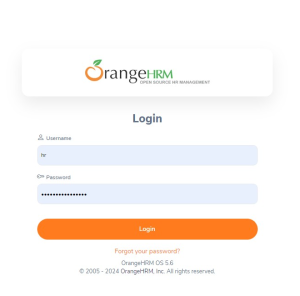Integrated Health Administration Management System: Streamlining Healthcare Operations
Introduction
In today’s fast-paced healthcare industry, efficient management of administrative tasks is crucial to ensure smooth operations and provide quality patient care. An integrated Health Administration Management System (HAMS) is a comprehensive software solution that helps healthcare organizations streamline their administrative processes, enhance communication, and improve overall efficiency. In this article, we will delve into the features and benefits of an integrated HAMS and explore its role in transforming healthcare administration.
Understanding an Integrated Health Administration Management System
What is an Integrated HAMS?
An Integrated Health Administration Management System is a centralized software platform that combines various modules and functionalities to support the administrative needs of healthcare organizations. It encompasses a range of features, including patient registration, appointment scheduling, billing and revenue management, electronic health records (EHR) management,
inventory management, and reporting



Key Components of an Integrated HAMS
An integrated HAMS typically consists of the following key components:
Patient Registration: This module allows healthcare providers to collect and manage patient demographic information, insurance details, and medical history efficiently. It ensures accurate record-keeping and enables seamless information sharing across departments.
Appointment Scheduling: The appointment scheduling module allows healthcare organizations to manage and optimize their appointment calendars. It enables patients to book appointments online, reduces wait times, minimizes scheduling conflicts, and improves patient satisfaction.
Billing and Revenue Management: The billing and revenue management module automates the billing process, from generating invoices and claims to tracking payments and managing reimbursements. It ensures accurate and timely billing, reduces errors, and improves revenue cycle management.
Electronic Health Records (EHR) Management: EHR management module facilitates the digital storage and retrieval of patient medical records. It enables healthcare providers to access patient information securely, track medical history, view test results, and share information with other authorized parties, leading to improved care coordination.
Inventory Management: This module helps healthcare organizations efficiently manage their inventory of medical supplies, medications, and equipment. It tracks stock levels, automates reordering, and ensures timely availability of essential items, reducing wastage and streamlining procurement processes.
Reporting and Analytics: The reporting and analytics module provides healthcare organizations with valuable insights into their administrative operations. It generates reports on key performance indicators, such as patient flow, revenue, and resource utilization, allowing organizations to identify areas for improvement and make data-driven decisions.
Benefits of an Integrated HAMS
Implementing an integrated HAMS offers numerous benefits for healthcare organizations, administrators, and patients alike. Let’s explore some of the key advantages:
Enhanced Efficiency: By automating administrative tasks and centralizing information, an integrated HAMS eliminates manual paperwork, reduces errors, and improves overall efficiency. It allows healthcare providers to focus more on patient care and reduces time spent on administrative tasks.
Improved Communication and Collaboration: With an integrated HAMS, healthcare providers, administrative staff, and other stakeholders can communicate and collaborate seamlessly. It facilitates information sharing, enables real-time updates, and enhances interdisciplinary coordination, leading to better patient outcomes.
Cost Savings: By streamlining processes and reducing manual work, an integrated HAMS helps healthcare organizations save costs. It eliminates the need for excessive paperwork, minimizes billing errors, optimizes inventory management, and improves revenue cycle management, resulting in financial savings.
Enhanced Patient Experience: An integrated HAMS helps healthcare organizations deliver a better patient experience. It enables online appointment scheduling, reduces waiting times, enhances communication with patients, and ensures accurate billing and insurance processing, leading to increased patient satisfaction.
Improved Data Security and Privacy: With the implementation of an integrated HAMS, healthcare organizations can significantly enhance data security and privacy. It provides robust access controls, ensures compliance with privacy regulations, and safeguards patient information from unauthorized access or breaches.
Streamlined Reporting and Decision-Making: An integrated HAMS offers powerful reporting and analytics capabilities, enabling healthcare administrators to access real-time insights and make informed decisions. It provides comprehensive visibility into administrative operations, helps identify bottlenecks, and supports strategic planning for future growth.
Implementing an Integrated HAMS
Implementing an integrated HAMS requires careful planning, collaboration, and training. Here are some key steps to consider:
Assess Organizational Needs: Begin by identifying the specific administrative challenges your organization faces and determine the key functionalities required in an integrated HAMS.
Research and Select a Suitable Solution: Conduct thorough research, evaluate different vendors, and select an integrated HAMS that aligns with your organization’s requirements, scalability, and budget.
Plan Implementation: Create a detailed implementation plan, including timelines, resource allocation, and training requirements. Engage stakeholders from different departments to ensure smooth integration and user adoption.
Customization and Integration: Work closely with the vendor to customize the HAMS to fit your organization’s workflows and integrate it with existing systems, such as EHRs or accounting software.
Training and User Adoption: Provide comprehensive training to staff members to familiarize them with the new system. Encouragetheir active participation and address any concerns or challenges they may have. Monitor user adoption and provide ongoing support to ensure a smooth transition.
Continuous Evaluation and Improvement: Regularly assess the performance and effectiveness of the integrated HAMS. Gather feedback from users, analyze data, and make necessary adjustments to optimize processes and improve outcomes.
Conclusion
In a rapidly evolving healthcare landscape, an integrated Health Administration Management System plays a vital role in streamlining administrative processes, improving efficiency, and ultimately enhancing patient care. By automating tasks, facilitating communication, and providing valuable insights, an integrated HAMS empowers healthcare organizations to deliver high-quality care while maximizing operational efficiency. Investing in an integrated HAMS can lead to significant benefits, including cost savings, improved patient experiences, enhanced data security, and streamlined reporting and decision-making. As the healthcare industry continues to embrace digital transformation, implementing an integrated HAMS is a strategic step towards efficient healthcare administration.
To learn more about the systems visit http://digihealthpng.com/main
